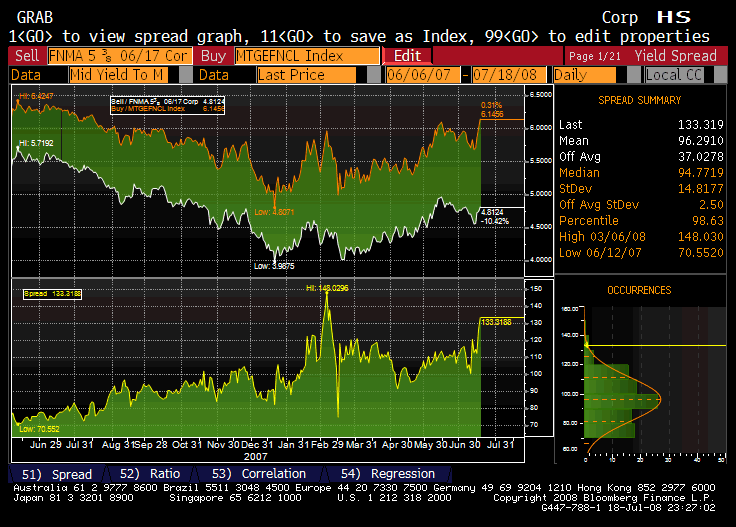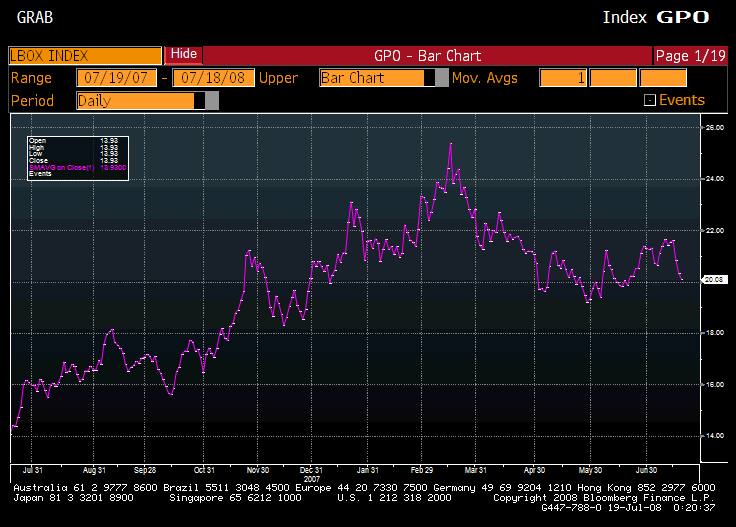
The above graph shows the difference in yields between a current coupon 30-year FNMA pass-through security, and a 10-year on-the-run FNMA senior note.? It is a good proxy for how much value is available in agency mortgages versus the debt that they issue.? Now, in mid-March, spreads were particularly high, because mortgage REITs and other leveraged holders of agency mortgages were forced to sell because of rising haircuts on repo financing.? Today, the furor is over the solvency of the agencies themselves.
I would not be worried about the creditworthiness of agency mortgages.? The US Government is not going to let the senior liabilities of the agencies be questioned as to creditworthiness.? To do so would incite panic among investors in many financial institutions that own agency debt and agency guaranteed mortgages.
Here is a graph of the Lehman Brothers Swaption Volatility index:

Now, in March, there was panic in the mortgage market, leading to high implied volatilities.? Today, it is more quiet.
I don’t agree with everything El-Erian of PIMCO says, but I think he is right when he believes that the senior portions of capital structures at the agencies will not be harmed.? It sounds high to me, but according to the article, 61% of PIMCO’s Total Return Fund is in mortgage bonds.? I can support an overweight position in agency mortgage bonds, the yields seem attractive at current levels of volatility.

Weirder things have happened. I think the yield blows out for a reason: the illiquidity is now spreading to agency mortgage-backed securities. Before one buys these securities, one needs to ask how marketable they will be.
If agency mortgage bonds are illiquid, then that’s a huge portion of the bond market that is off limits. I don’t think illiquidity can happen to agency mortgage bonds, absent a failure of Fannie and Freddie, where senior obligations are no longer whole.
The agencies are valuable to the US government. They want to keep them around, if for no other reason than to prevent systemic risk.